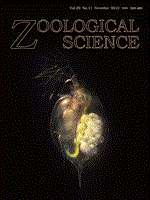The morphology of many organisms seems to be related to the environments in which they live. Many snakes are so similar in their morphological patterns that it becomes quite difficult to distinguish any adaptive divergence that may have occurred. Many authors have suggested that the microstructure of the reptile's scales has important functional value. Herein, we investigate variations on the micromorphology of the external surface of dorsal scales on the head, the mid-body region (trunk), and the tail of Rhomphotyphlops braminus (Typhlopidae), Eryx jaculus (Boidae), Psammophis sibilans (Colubridae), Naja haje (Elapidae) and Echis carinatus (Viperidae). The specimens were metallized and analyzed by scanning electron microscopy. All species displayed unique dorsal scale surface microstructures of the investigated regions. The microstructural pattern of the scales of head, trunk, and tail differs in different species of these snakes. In conclusion, we detected ecomorphologic relationships between extant dorsal scale microstructures and snake microhabitat, enabling us to hypothesize that environmental pressures have significant influences not only on these animals' macrostructure, but also on its microstructure as well.
How to translate text using browser tools
1 November 2012
Scales Microstructure of Snakes from the Egyptian Area
Ahmed A. Allam,
Rasha E. Abo-Eleneen
ACCESS THE FULL ARTICLE

Zoological Science
Vol. 29 • No. 11
November 2012
Vol. 29 • No. 11
November 2012
Echis carinatus
Eryx jaculus
microstructure
Naja haje
Psammophis sibilans
Rhomphotyphlops braminus
snake




